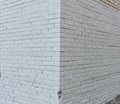Find results that contain all of your keywords. Content filter is on.
Search will return best illustrations, stock vectors and clipart.
Choose orientation:
Make it so!
You have chosen to exclude "" from your results.
Choose orientation:
Explore cartoons & images using related keywords:
tree
flower
leaf
plant
garden
autumn
grass
nature lawn woodland shrub meadow forest sunlight park yard branch backyard red wall corner bauhinia city landmark beijing china palace museum called forbidden ancient planning concept unity emphasized correspond capital highlight legitimacy regime supremacy imperial power emperor heaven lived world regarded commandedThe Red Wall At The Corner Of Bauhinia City, A Landmark In Beijing, China Royalty-Free Stock Photography
Designed by
Title
The red wall at the corner of Bauhinia City, a landmark in Beijing, China #223988153
Description















